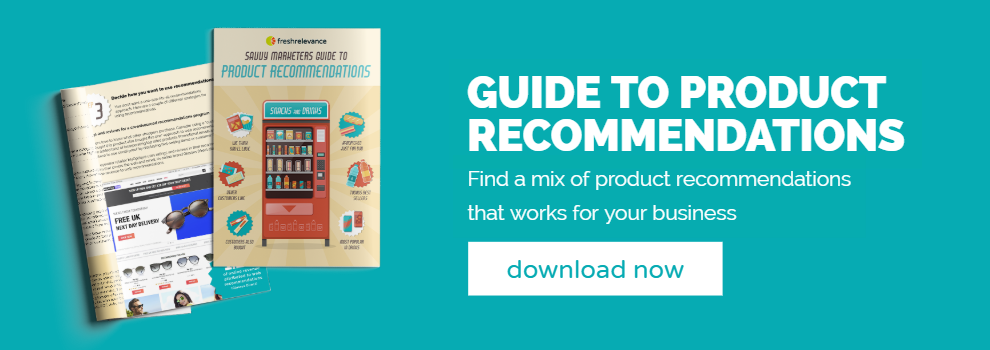Most marketers recognize the critical need to personalize their marketing in order to resonate with their customers. If done manually, this can be a tedious – probably even impossible – task.
That’s where automation comes in. Brands can deliver tailored campaigns at scale by automatically coordinating behavioral data and delivering the most relevant content to each individual.
Automated, personalized campaigns eliminate a lot of repetitive and time-consuming manual tasks, so marketers can deliver ROI in a predictable way. But automation has its pitfalls if approached with a set-and-forget mentality.
Human oversight is needed to ensure that the intricate marketing machine ticking away in the background is able to deliver the company’s goals.

Pinterest’s wedding mishap is a case in point. The social network sent users an email congratulating them for getting married and recommending wedding-related pins and boards.
The company’s automated marketing had picked up on the viewed wedding content and produced ‘personalized’ marketing messaging to match. But just because a user curates a wedding-themed board, this doesn’t mean that they’re getting married soon!
Of course, this doesn’t mean that automation has no place in marketing — it definitely does. When constructing any campaign, it’s important for marketers to ask who customers are, and what motivates them at this stage in the buying journey. Then automation can get on with the hard work of delivering the messages. The customer experience can be seamless when it comes to personalization efforts, but with a set-and-forget mentality, the personalized experience can suffer.
Here are some common personalization mistakes and scenarios, and how marketers can fine-tune campaigns if needed.
Gift giving
By basing marketing content on behavioral data, you can communicate with customers based on their demonstrated interests. For instance, it’s a good idea to base product recommendations on past browse and purchase behavior.
Yet, marketers need to be careful around gift-giving occasions, such as Christmas or Valentine’s Day, when a strong focus on past behavior can lead to inaccurate personalization.

Take the example of a thirty-something shopping for a Christmas gift for his mother. His historic browse and purchase customer data might be stereotypically masculine and focused on grooming products.
If he suddenly starts browsing women’s perfume in early December, this is a strong indicator that he’s gift shopping. Yet, as personalization engines tend to personalize based on the shopper’s past behavior, marketers may miss the opportunity to recommend products for gifts they’re searching for.
It’s therefore advisable to adapt product recommendations around seasonal events. For example, by providing inspirational, crowd-based suggestions – such as trending products or bestsellers – to help shoppers find the perfect gift. And after the holiday, product recommendations should again focus on longer-term customer data to avoid suggesting items based on gift purchases.
Over-personalization
In today’s data-rich age, marketers have access to an unprecedented amount of consumer information, as well as the tools to act on it. This opens up endless opportunities for personalized experiences.
However, just because you can personalize almost everything doesn’t mean that you should. Implying that a brand tracks and analyses a customer’s every website interaction, purchase, and click to deliver personalized content can come across as stalkerish if approached too aggressively. Customer expectations are that you use your marketing strategies to show them relevant content without being creepy.

The Target blunder is a classic example of why the sensitive use of behavioral information is important.
The US discount retailer identified purchase patterns for a number of products, such as cotton wool and unscented lotion, that strongly indicated that the customer was expecting a baby and even gave clues when the baby was likely to be due.
However, given the sensitive topic, it made customers feel uncomfortable when the retailer proactively sent them targeted vouchers for baby products.
Here, it can make sense to use behavioral information in more subtle ways, for example by mixing personalized offers with top-rated or trending products, in order to be helpful without being invasive.
There are many other instances where certain product recommendations might not be appropriate. Customers may not wish to open an email that prominently displays recommendations for sensitive products such as medication, or a surprise engagement ring.
For multi-brand retailers, it may also be inappropriate to display certain competing brands side-by-side, or to recommend products only from one brand at the expense of others. In this case, recommendations need to be as relevant as possible for the customer, without breaching brand guidelines.
It’s therefore crucial that marketers have the power to filter and refine decisions made by personalization engines as part of their marketing personalization.
Serial returners
Many marketers segment customers based on their purchasing behavior, but often forget to factor in returns.
This can paint an incomplete and even misleading picture of your customers.

For example, if a shopper purchases a floral print shirt, this could indicate that they like this kind of pattern. On the back of this information, the product recommendations engine may well start suggesting all kinds of flowery clothing.
But if the customer returned the item because they didn’t like it, these recommendations are unlikely to resonate and may even annoy the customer. Therefore, it’s vital to update a customer’s purchase history with the items they returned to ensure subsequent marketing is based on relevant information.
As ASOS’s updated returns policy emphasized last year, high-volume buyers are not necessarily your most profitable customers — if they’re actually serial returners, they may even be a serious threat for your profit margin.
Personalization by machine learning is an incredibly useful tactic for marketers. By understanding what the customer likes and needs, you can drive sales and long-term customer loyalty.
But as with all forms of automation, marketers can’t afford to take a completely hands-off approach. Human oversight is needed to ensure that brands send the right message to the right customer, at every single interaction.
Adapted from guest post we published on netimperative







